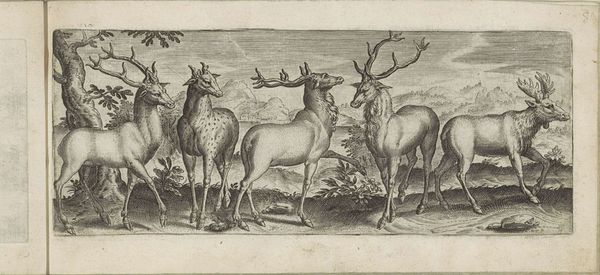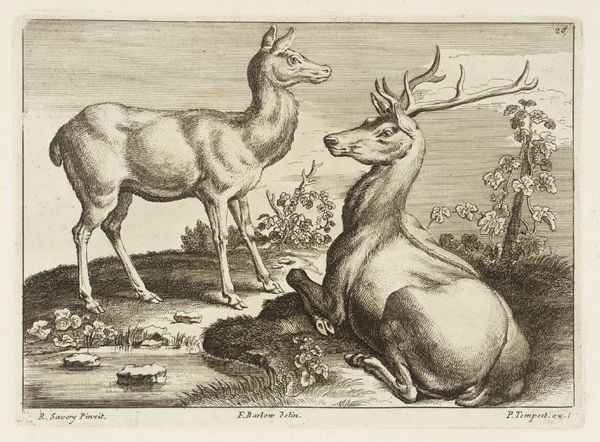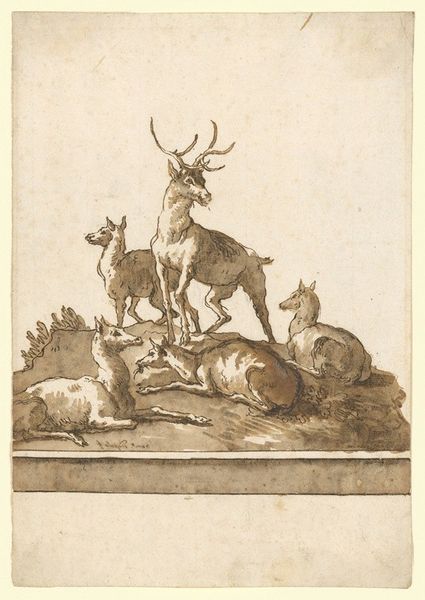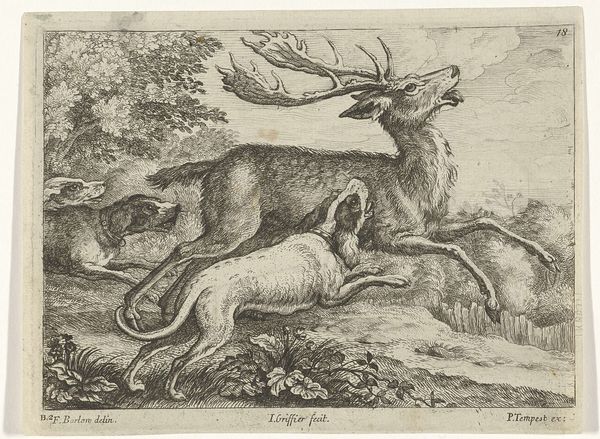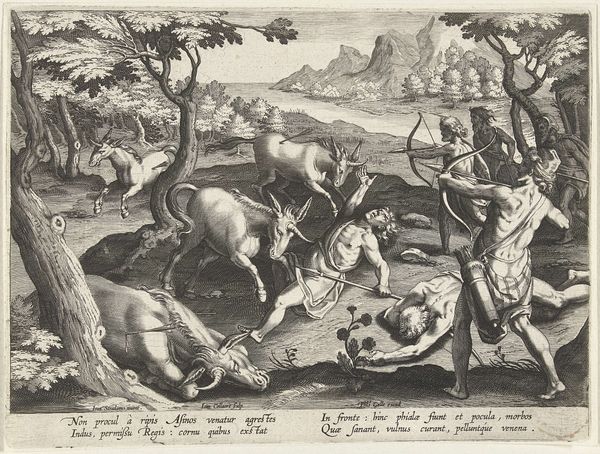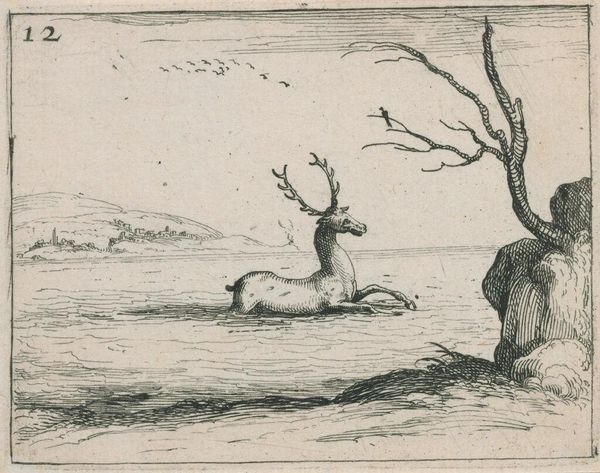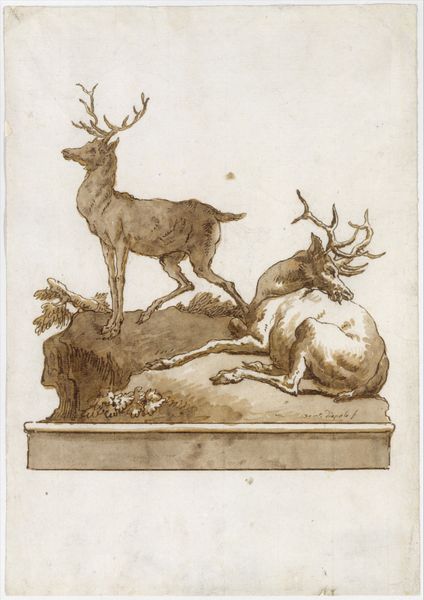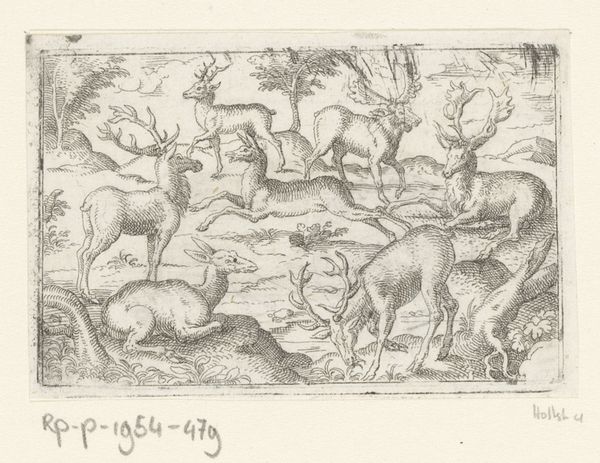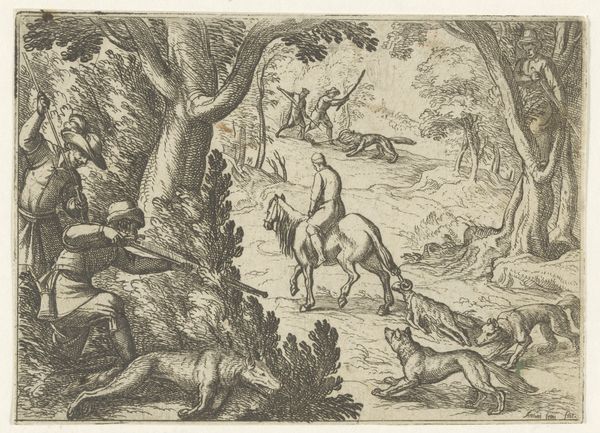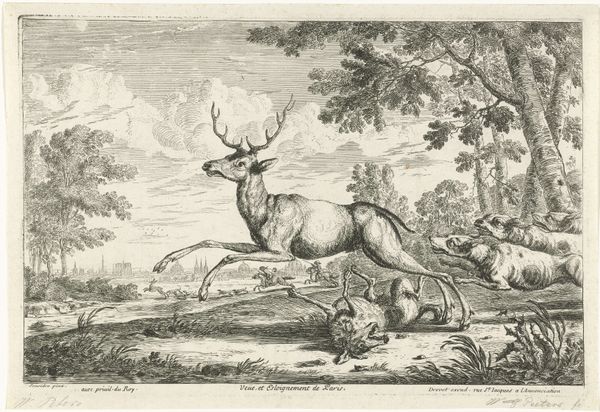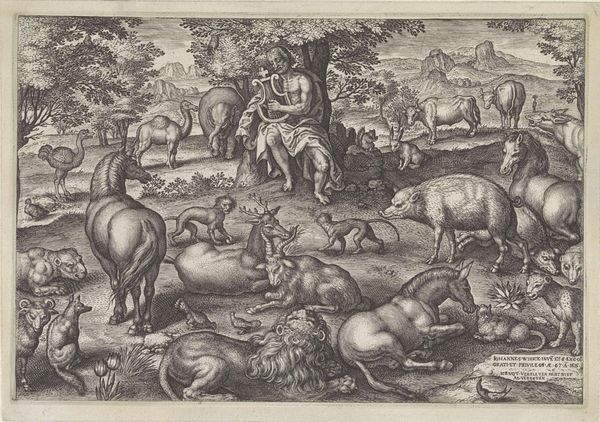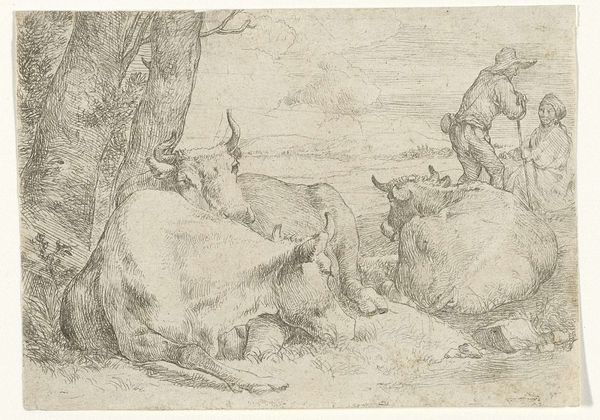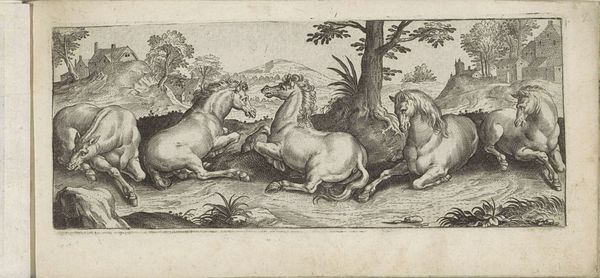
print, engraving
# print
#
landscape
#
figuration
#
history-painting
#
engraving
#
realism
Dimensions: height 86 mm, width 211 mm
Copyright: Rijks Museum: Open Domain
Editor: This engraving, "Five Lying Deer in a Landscape," was created in 1583 by Marcus Gheeraerts. It feels like such a peaceful scene. What historical contexts might be influencing this seemingly serene image? Curator: That's an interesting observation about peace. The late 16th century was a time of significant upheaval, particularly in the Netherlands, with the Dutch Revolt against Spanish rule. Images of animals, especially those related to hunting, were often stand-ins for displays of power and dominion. How might this context shift your perspective on these deer, seemingly at rest? Editor: So, maybe the calm is deceptive? That the deer aren't just relaxing, but representing something else entirely? I see. It's unsettling to consider them as symbols within a power dynamic, making them more vulnerable and less... free. Curator: Exactly! Consider who had access to land and hunting rights during that period. Landscape prints like this were often commissioned by or circulated among the elite. This image normalizes a specific relationship between humans and the natural world, reflecting existing social hierarchies. Does understanding that shift the mood of the piece for you? Editor: Definitely. Knowing this was meant for a specific, privileged audience complicates everything. It moves from a simple landscape to something about control and status. Were there any contemporary critiques of this kind of imagery? Curator: Absolutely! Thinkers began to question these power structures. The deer become more than just deer; they represent the voiceless, whose narrative is mediated by the powerful. Reflecting on that allows us to look critically at the values promoted and naturalized through these works. Editor: I hadn't considered the voiceless aspect. It really makes me rethink what I'm seeing – not just a pretty picture but a reflection of real-world inequalities. Curator: Precisely! By exploring these layers, we unlock the image's ability to speak to the power dynamics, not just of the past but perhaps also to contemporary issues surrounding land ownership, wildlife, and privilege. Editor: This has completely transformed how I see this print. Thanks for helping me unpack its complexities!
Comments
No comments
Be the first to comment and join the conversation on the ultimate creative platform.
